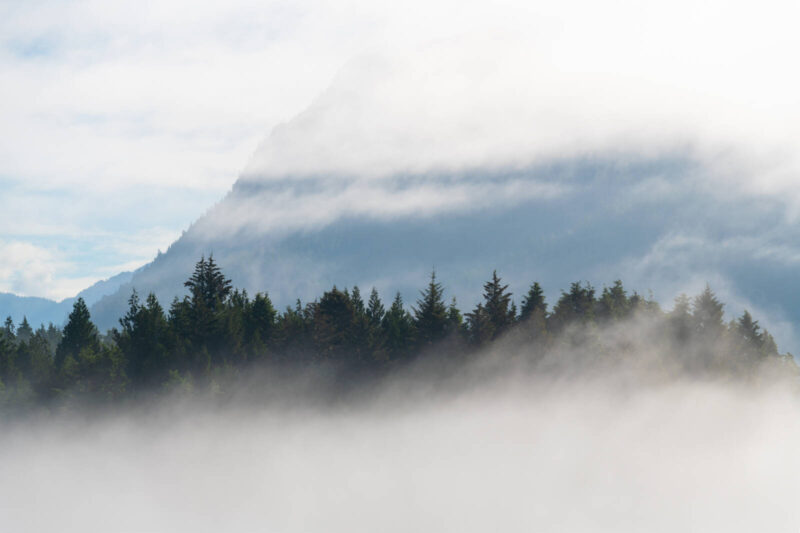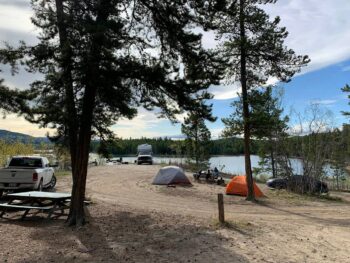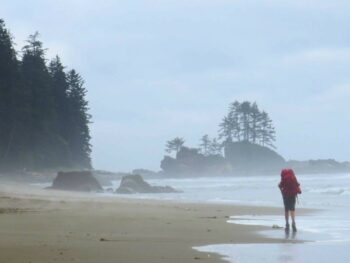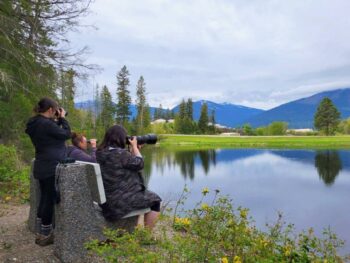Old-growth forests that were environmental and Indigenous rights battlegrounds during British Columbia’s “war in the woods” over clearcut logging in the 1980s and ’90s are set to receive permanent protections in a land and forest management agreement.
The B.C. government announced June 18 that an agreement with two Vancouver Island First Nations will protect about 760 square kilometres of Crown land in Clayoquot Sound by establishing 10 new conservancies in areas that include old-growth forests and unique ecosystems.
The partnership involves reconfiguring the tree farm licence in the Clayoquot Sound area to protect the old-growth zones while supporting other forest industry tenures held by area First Nations, Forests Minister Bruce Ralston said in a statement.
READ MORE: Tribal Parks Guardians improve access to Big Tree Trail near Tofino
Statements from the Clayoquot Sound’s Ahoushat and Tla-o-qui-aht First Nations say the conservancies will preserve old-growth forests on Meares Island and the Kennedy Lake area, sites of protests that led to hundreds of arrests.
“We have successfully reached a first phase implementation of the land-use vision,” Tyson Atleo, Ahousaht First Nation hereditary representative, said in an interview. “We will see (Tree Farm Licence 54) on Meares Island actively become real legislated protected areas for the first time in history.”
Plans for clearcut logging on Meares Island, about one kilometre northeast of Tofino and the site of some of the world’s largest western red cedars, touched off environmental and Indigenous protests in the 1980s. They eventually resulted in a court injunction that halted logging, saying Indigenous land claim issues should be resolved.
READ MORE: ‘Escape to Clayoquot Sound’: The perfect summer read for aspiring Island adventurers!
About a decade later, more than 800 people were arrested in the Clayoquot Sound area of Kennedy Lake near Ucluelet as protesters descended to demonstrate against more logging activities.
The forest company eventually left the area after losing an estimated $200 million in contracts related to timber sales.
Atleo said the conservancy lands, previously licensed for forestry, will now safeguard some of the last remaining old-growth forests on Vancouver Island and reflect the land-use visions and livelihoods of the Ahousaht and Tla-o-qui-aht First Nations.
“It will produce significant economic opportunity for the Ahousaht in carbon credit development, in investments in tourism, which we are making, as well as being able to use forest products for the benefit of our community,” he said.
READ MORE: Tla-o-qui-aht Tribal Parks ʔiisaak Pledge; Paddling Together
The Ahousaht will look to sell and generate carbon credits as part of the environmental benefits of the preserved forest areas, but will not sell to oil and gas companies, Atleo said.
The agreement is supported by more than $40 million raised by the environmental group Nature United, which said it will use the money to compensate the forestry tenure holder and support two Ahousaht and Tla-o-qui-aht nation conservancy management endowment funds.
“These new conservancies include old-growth forests on Meares Island, the site of the historic ‘war in the woods’ protests against logging that galvanized global attention in 1993,” said a Nature United statement.
“Pacific coastal rainforests, such as those in Clayoquot Sound, also hold vast amounts of carbon stored for hundreds of years, making them powerful natural climate solutions that will continue to sequester carbon while contributing to healthy air and water, ecosystem resilience and the well-being of communities.”
Nature United executive director Hadley Archer said the organization has been working with the Ahousaht and Tla-o-qui-aht peoples for more than a decade.
“We are proud that Nature United’s long-term investment in Clayoquot Sound has supported a new model of collaboration and transformative change that will protect globally significant old-growth forests, provide financing for Indigenous-led stewardship and reverberate in the province and across Canada,” he said.
Atleo said the establishment of the new conservancies will be celebrated widely, but the First Nation will now put out the call for more government, industry and public support for the area’s future management by the Ahousaht.
“There’s no funding for managing these protected areas into the long-term future and that’s the next pressure point we need to apply,” he said.
The conservancies come into effect on June 26.
Plan your adventures throughout the West Coast at westcoasttraveller.com and follow us on Facebook and Instagram @thewestcoasttraveller. And for the top West Coast Travel stories of the week delivered right to your inbox, sign up for our weekly Armchair Traveller newsletter!











 Hope, B.C’s storm-damaged Othello Tunnels to partially re-open to visitors in July
Hope, B.C’s storm-damaged Othello Tunnels to partially re-open to visitors in July